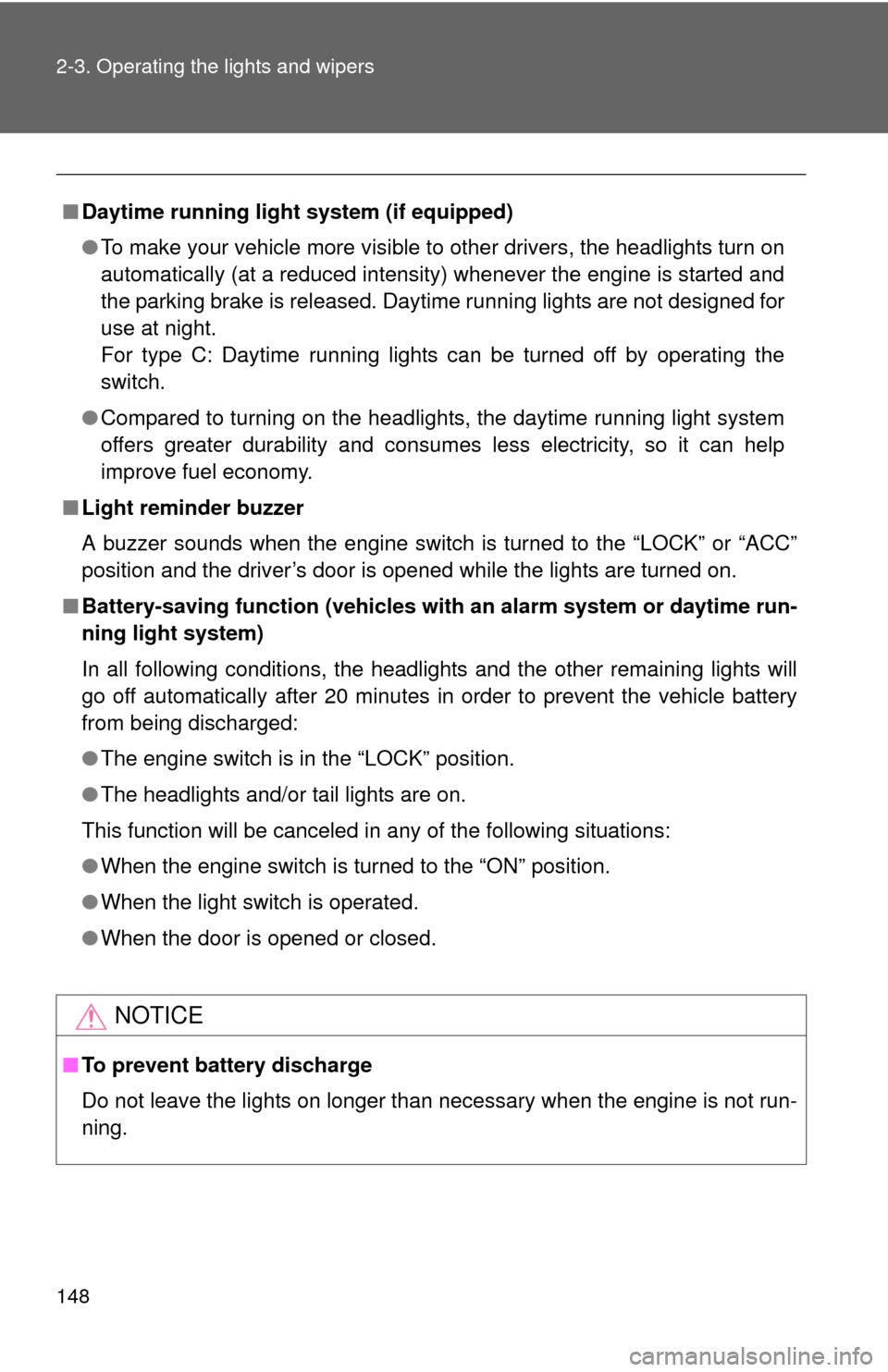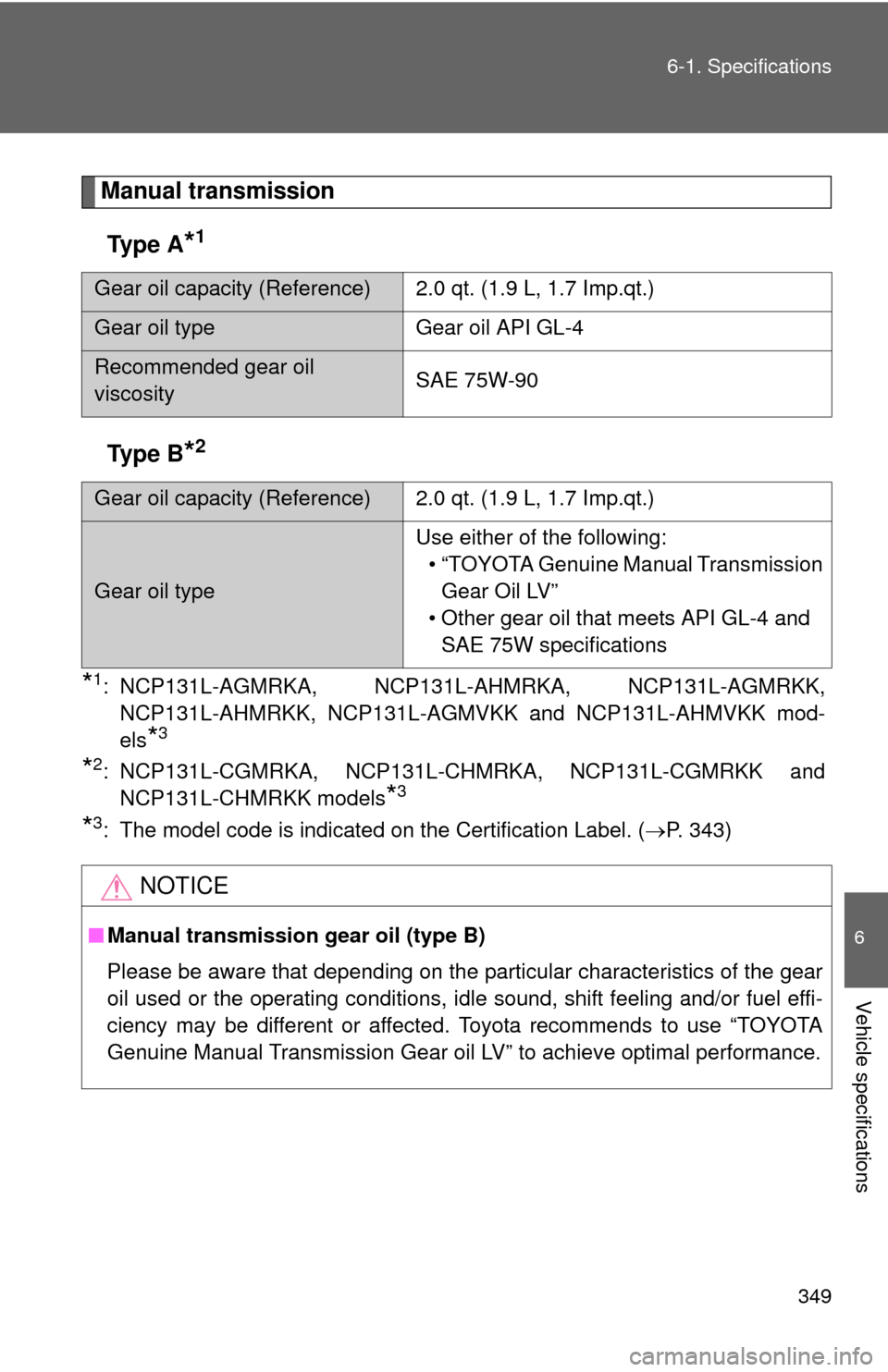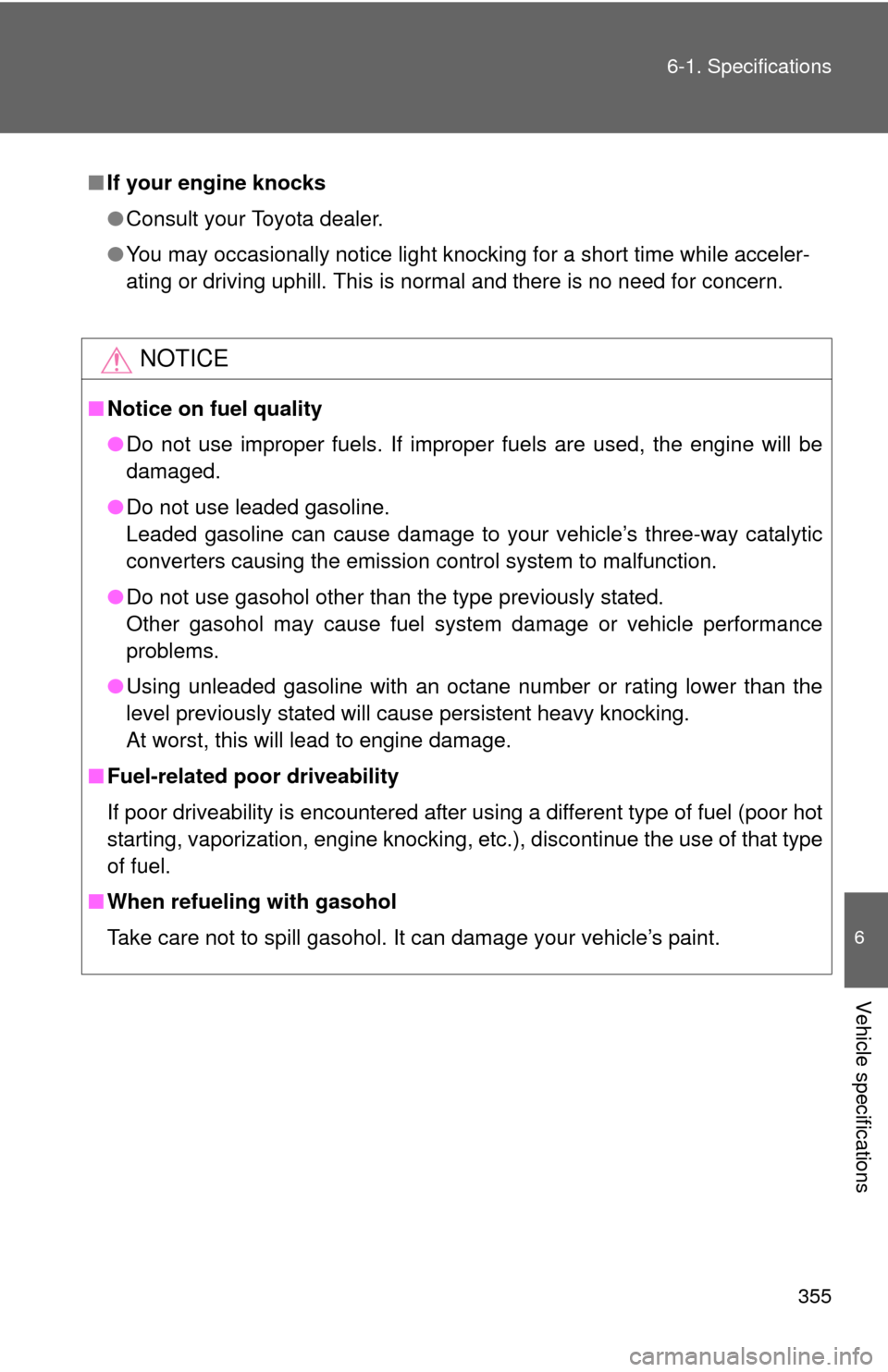Page 70 of 400
![TOYOTA YARIS 2014 3.G Owners Manual 70 1-5. Refueling
■Fuel types
Unleaded gasoline. (Octane rating 87 [Research Octane Number 91] or
higher)
■ Fuel tank capacity
Approximately 11.1 gal. (42 L, 9.2 Imp.gal.)
CAUTION
■When refuelin TOYOTA YARIS 2014 3.G Owners Manual 70 1-5. Refueling
■Fuel types
Unleaded gasoline. (Octane rating 87 [Research Octane Number 91] or
higher)
■ Fuel tank capacity
Approximately 11.1 gal. (42 L, 9.2 Imp.gal.)
CAUTION
■When refuelin](/manual-img/14/6854/w960_6854-69.png)
70 1-5. Refueling
■Fuel types
Unleaded gasoline. (Octane rating 87 [Research Octane Number 91] or
higher)
■ Fuel tank capacity
Approximately 11.1 gal. (42 L, 9.2 Imp.gal.)
CAUTION
■When refueling the vehicle
Observe the following precautions while refueling the vehicle.
Failure to do so may result in death or serious injury.
●After exiting the vehicle and before opening the fuel door, touch an
unpainted metal surface to discharge any static electricity. It is important to
discharge static electricity before refueling because sparks resulting from
static electricity can cause fuel vapors to ignite while refueling.
● Always hold the grips on the fuel tank cap and turn it slowly to remove it.
A whooshing sound may be heard when the fuel tank cap is loosened.
Wait until the sound cannot be heard before fully removing the cap.
In hot weather, pressurized fuel may spray out the filler neck and cause
injury.
● Do not allow anyone that has not discharged static electricity from their
body to come close to an open fuel tank.
● Do not inhale vaporized fuel.
Fuel contains substances that are harmful if inhaled.
● Do not smoke while refueling the vehicle.
Doing so may cause the fuel to ignite and cause a fire.
● Do not return to the vehicle or touch any person or object that is statically
charged.
This may cause static electricity to build up, resulting in a possible ignition
hazard.
Page 148 of 400

148 2-3. Operating the lights and wipers
■Daytime running light system (if equipped)
●To make your vehicle more visible to other drivers, the headlights turn on
automatically (at a reduced intensity) whenever the engine is started and
the parking brake is released. Daytime running lights are not designed for
use at night.
For type C: Daytime running lights can be turned off by operating the
switch.
● Compared to turning on the headlights, the daytime running light system
offers greater durability and consumes less electricity, so it can help
improve fuel economy.
■ Light reminder buzzer
A buzzer sounds when the engine switch is turned to the “LOCK” or “ACC”
position and the driver’s door is opened while the lights are turned on.
■ Battery-saving function (vehicles with an alarm system or daytime run-
ning light system)
In all following conditions, the headlights and the other remaining lights will
go off automatically after 20 minutes in order to prevent the vehicle battery
from being discharged:
●The engine switch is in the “LOCK” position.
● The headlights and/or tail lights are on.
This function will be canceled in any of the following situations:
● When the engine switch is turned to the “ON” position.
● When the light switch is operated.
● When the door is opened or closed.
NOTICE
■To prevent battery discharge
Do not leave the lights on longer than necessary when the engine is not run-
ning.
Page 279 of 400
279
4-3. Do-it-yourself maintenance
4
Maintenance and care
Fuse layout and amperage ratings
Engine compartment (type A fuse box)
FuseAmpereCircuit
1 ID/UP 7.5 A Multiport fuel injection system/
sequential multiport fuel injection
system
2 EFI MAIN 20 A Multiport fuel injection system/
sequential multiport fuel injection
system
3 EFI NO.3 7.5 A Multiport fuel injection system/
sequential multiport fuel injection
system
4 HORN 10 A Horn
5 EFI NO.2 10 A Multiport fuel injection system/
sequential multiport fuel injection
system
6 IG2 10 A Multiport fuel injection system/
sequential multiport fuel injection
system, airbag system, stop lights,
front passenger occupant classifi-
cation system
Page 282 of 400
282 4-3. Do-it-yourself maintenance
Engine compartment (type B fuse box)
*1: NCP131L-AGMRKA, NCP131L-AGPRKA, NCP131L-AHMRKA,
NCP131L-AHPRKA, NCP131L-AGMRKK, NCP131L-AGPRKK,
NCP131L-AHMRKK, NCP131L-AH PRKK, NCP131L-AGMVKK,
NCP131L-AGPVKK, NCP131L-AHMVKK and NCP131L-AHPVKK mod-
els
*2
*2: The model code is indicated on the Certification Label. ( P. 343)
FuseAmpereCircuit
1 EU-DRL 15 A No circuit
2 S-HORN 10 AMultiport fuel injection system/
sequential multiport fuel injection
system
3 H-LP MAIN 7.5 A Headlights
4ST
*140 A No circuit
5 H-LP RH HI 10 A Right-hand headlight (high beam)
6 H-LP LH HI 10 A Left-hand headlight (high beam),
gauges and meters
7 H-LP RH LO 10 A Right-hand headlight (low beam)
8 H-LP LH LO 10 A Left-hand headlight (low beam),
front fog lights
Page 346 of 400
346 6-1. Specifications
Fuel
Lubrication system■ Engine oil selection
“Toyota Genuine Motor Oil” is used in your Toyota vehicle. Use
Toyota approved “Toyota Genuine Motor Oil” or equivalent to satisfy
the following grade and viscosity.
Oil grade: ILSAC GF-5 multigrade engine oil
Recommended viscosity: SAE 5W-30
SAE 5W-30 is the best choice for
good fuel economy and good
starting in cold weather.
If SAE 5W-30 is not available,
SAE 10W-30 oil may be used.
However, it should be replaced
with SAE 5W-30 at the next oil
change.
Fuel typeUnleaded gasoline only
Octane rating 87 (Research Octane Number 91) or higher
Fuel tank capacity
(Reference) 11.1 gal. (42 L, 9.2 lmp.gal.)
Oil capacity
(Drain and refill
-reference)
With filter
Without filter 3.9 qt. (3.7 L, 3.3 Imp.qt.)
3.6 qt. (3.4 L, 3.0 Imp.qt.)
Outside temperature
Page 349 of 400

349
6-1. Specifications
6
Vehicle specifications
Manual transmission
Ty p e A
*1
Ty p e B*2
*1: NCP131L-AGMRKA, NCP131L-AH MRKA, NCP131L-AGMRKK,
NCP131L-AHMRKK, NCP131L-AGMV KK and NCP131L-AHMVKK mod-
els
*3
*2: NCP131L-CGMRKA, NCP131L-CH MRKA, NCP131L-CGMRKK and
NCP131L-CHMRKK models
*3
*3: The model code is indicated on the Certification Label. ( P. 343)
Gear oil capacity (Reference) 2.0 qt. (1.9 L, 1.7 Imp.qt.)
Gear oil typeGear oil API GL-4
Recommended gear oil
viscosity SAE 75W-90
Gear oil capacity (Reference) 2.0 qt. (1.9 L, 1.7 Imp.qt.)
Gear oil typeUse either of the following:
• “TOYOTA Genuine Manual Transmission Gear Oil LV”
• Other gear oil that meets API GL-4 and SAE 75W specifications
NOTICE
■ Manual transmission gear oil (type B)
Please be aware that depending on the particular characteristics of the gear
oil used or the operating conditions, idle sound, shift feeling and/or fuel effi-
ciency may be different or affected. Toyota recommends to use “TOYOTA
Genuine Manual Transmission Gear oil LV” to achieve optimal performance.
Page 354 of 400

354 6-1. Specifications
■Recommendation of the use of cleaner burning gasoline
Cleaner burning gasoline, including reformulated gasoline that contains oxy-
genates such as ethanol or MTBE (Methyl Tertiary Butyl Ether) is available in
many areas.
Toyota recommends the use of cleaner burning gasoline and appropriately
blended reformulated gasoline. These types of gasoline provide excellent
vehicle performance, reduce vehicle emissions and improve air quality.
■ Non-recommendation of the use of blended gasoline
●If you use gasohol in your vehicle, be sure that it has an octane rating no
lower than 87.
● Toyota does not recommend the use of gasoline containing methanol.
■ Non-recommendation of the use of gasoline containing MMT
Some gasoline contains an octane enhancing additive called MMT (Methyl-
cyclopentadienyl Manganese Tricarbonyl).
Toyota does not recommend the use of gasoline that contains MMT. If fuel
containing MMT is used, your emission control system may be adversely
affected.
The malfunction indicator lamp on the instrument cluster may come on. If
this happens, contact your Toyota dealer for service.
●Use only gasoline containing a maxi-
mum of 10% ethanol.
DO NOT use any flex-fuel or gasoline
that could contain more than 10% etha-
nol, including from any pump labeled
E15, E30, E50, E85 (which are only
some examples of fuel containing more
than 10% ethanol).DO NOT use gasoline
containing more than
10% ethanol.
(15% ethanol)
(50% ethanol)
(85% ethanol)
Page 355 of 400

355
6-1. Specifications
6
Vehicle specifications
■
If your engine knocks
●Consult your Toyota dealer.
● You may occasionally notice light knocking for a short time while acceler-
ating or driving uphill. This is normal and there is no need for concern.
NOTICE
■Notice on fuel quality
●Do not use improper fuels. If improper fuels are used, the engine will be
damaged.
● Do not use leaded gasoline.
Leaded gasoline can cause damage to your vehicle’s three-way catalytic
converters causing the emission control system to malfunction.
● Do not use gasohol other than the type previously stated.
Other gasohol may cause fuel system damage or vehicle performance
problems.
● Using unleaded gasoline with an octane number or rating lower than the
level previously stated will cause persistent heavy knocking.
At worst, this will lead to engine damage.
■ Fuel-related poor driveability
If poor driveability is encountered after using a different type of fuel (poor hot
starting, vaporization, engine knocking, etc.), discontinue the use of that type
of fuel.
■ When refueling with gasohol
Take care not to spill gasohol. It can damage your vehicle’s paint.